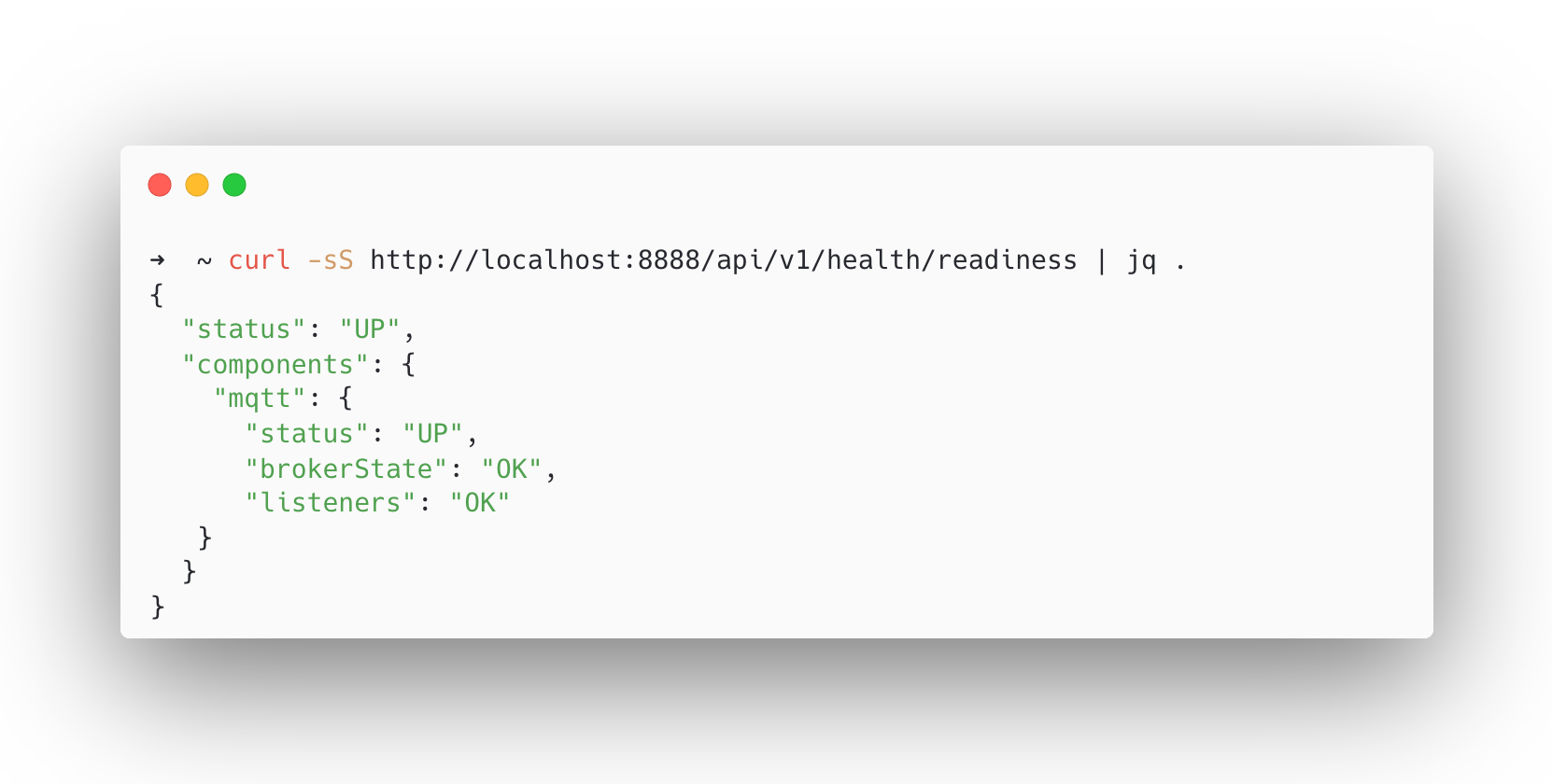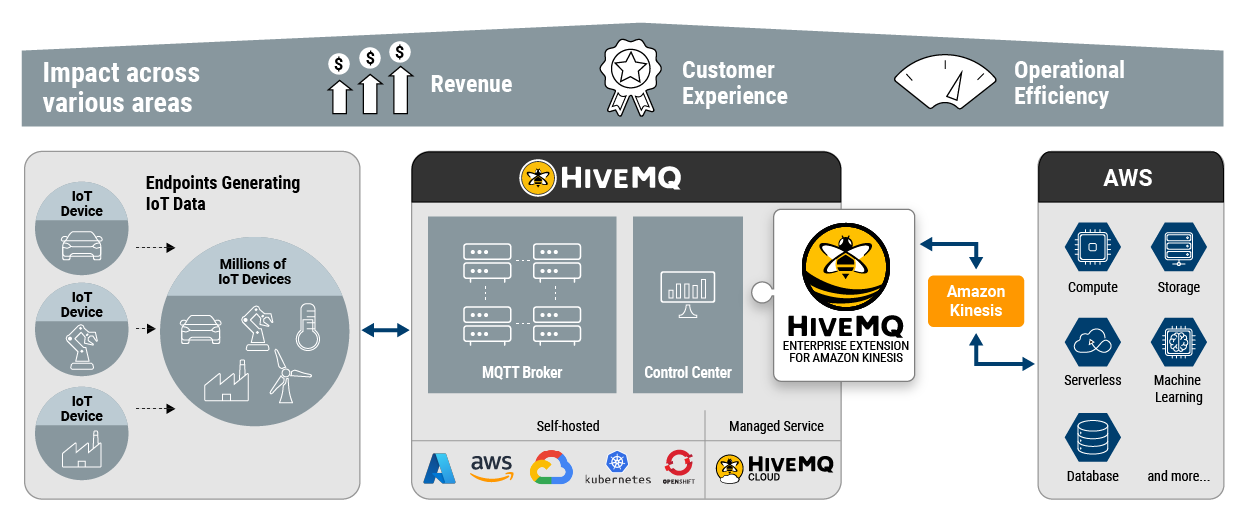What’s New in HiveMQ 4.14?
The HiveMQ team is proud to announce the release of HiveMQ Enterprise MQTT Platform 4.14. This release introduces the HiveMQ Enterprise Extension for Amazon Kinesis Customization SDK, a new API to monitor the health of your HiveMQ cluster, and numerous performance and observability enhancements.
Highlights
- Liveness and readiness probes for your HiveMQ cluster
- Customization SDK for the HiveMQ Enterprise Extension for Kinesis
Health API for Liveness and Readiness Checks
Our customers deploy HiveMQ clusters in diverse environments ranging from on-premise data centers to managed cloud services such as Amazon Web Services, Microsoft Azure, and Google Cloud. Maintaining outstanding cluster availability is critical for many of these use cases. Health checks make it easier for your site reliability engineers to ensure the robustness of the HiveMQ deployments they manage and respond to issues automatically. Liveness and readiness probes provide reliable checks of the health and availability of the MQTT components in your HiveMQ cluster and are particularly useful in your Kubernetes deployments.
How it works
The new HiveMQ Health API adds Readiness and Liveness REST API resources for every node in your HiveMQ cluster. These new information endpoints let you pinpoint the exact state of each HiveMQ node and derive the overall cluster state robustly and predictably.
The liveness probe checks whether your broker is running and responsive, and the readiness probe tells you whether the MQTT component of your HiveMQ broker is ready to serve traffic.
Together, readiness and liveness probes provide a way to verify the health of an MQTT cluster and ensure that traffic is routed only to components that are ready and able to handle it. Health probes return HTTP status codes that show the current state of each node in your cluster. The HTTP status code 200 indicates that the node can accept MQTT traffic, whereas the status code 503 shows that the node is currently unavailable. Each response provides additional information in a human-readable JSON format for customers who want to dive deeper:

For full configuration details, visit our Health API documentation.
How it helps
Monitoring the health and readiness of your MQTT broker can help you proactively address issues and minimize the risk of potential downtime. The in-depth observability of the Health API gives your administrators the ability to build self-healing systems that ensure the highest possible level of availability.
HiveMQ Kinesis Extension Customization SDK
The HiveMQ Enterprise Extension for Amazon Kinesis provides cloud-native integration with Amazon Kinesis Data Streams. Our new Customization SDK gives you the ability to create full-featured bidirectional custom transformations of messages between MQTT and Amazon Kinesis.

How it works
Amazon Kinesis is a suite of fully-managed Amazon Web Services (AWS) designed to ingest, process, and analyze data streams. Amazon Kinesis Data Streams can capture data from various sources as part of the Kinesis suite.
This release of our Amazon Kinesis extension adds bidirectional customization of messages between MQTT clients and Amazon Kinesis Data Streams via the HiveMQ broker. The new Customization SDK allows our customers to implement their use cases in the most flexible way while benefiting from the durability and scalability of the Kinesis extension. Additionally, the Customization SDK provides full access to all MQTT and Kinesis message data.
How it helps
Our Enterprise Extension for Amazon Kinesis further extends HiveMQ’s multi-cloud integration portfolio.
Customers who need to integrate with AWS services can use the extension to efficiently and reliably move messages between HiveMQ brokers and AWS Kinesis. The new customization SDK provides full access to all message data and allows our customers to build fine-grained use-case-specific implementations.
For configuration details and use case examples, see HiveMQ Enterprise Extension for Amazon Kinesis Customization.
More Noteworthy Fixes and Improvements
HiveMQ Enterprise MQTT Broker
- Improved the performance of open file limit checks during HiveMQ startup.
- Fixed an issue that could significantly increase the duration of cluster merges in clusters that have a large number of nodes.
- Improved vector clock layouts to reduce memory consumption per connected client.
- Added metric to track the total execution time of single writer tasks.
- Fixed a rare condition that could cause a QoS 0 packet with no message payload to drop when a system is under high load.
- Trimmed memory usage when a node that has a large number of connected clients leaves a cluster.
- Added metrics to measure the largest single writer queue sizes and help identify whether the load is evenly distributed across all available CPUs.
- Added the ability to specify the location of the logback.xml via an optional system property and environment variable.
HiveMQ Enterprise Security Extension
- Updated PostgreSQL driver download links to reflect the latest JDBC versions.
- Removed invalid allow-all authentication/authorization manager configuration options from the control center pipelines.
HiveMQ Swarm
- Improved feedback for payload generator exceptions that occur during Last Will or Publish payload generation.
Get Started Today
To upgrade to HiveMQ 4.14 from a previous HiveMQ version, take a look at our HiveMQ Upgrade Guide. To learn more about all of the features we offer, explore the HiveMQ User Guide.
HiveMQ Team
The HiveMQ team loves writing about MQTT, Sparkplug, Industrial IoT, protocols, how to deploy our platform, and more. We focus on industries ranging from energy, to transportation and logistics, to automotive manufacturing. Our experts are here to help, contact us with any questions.
